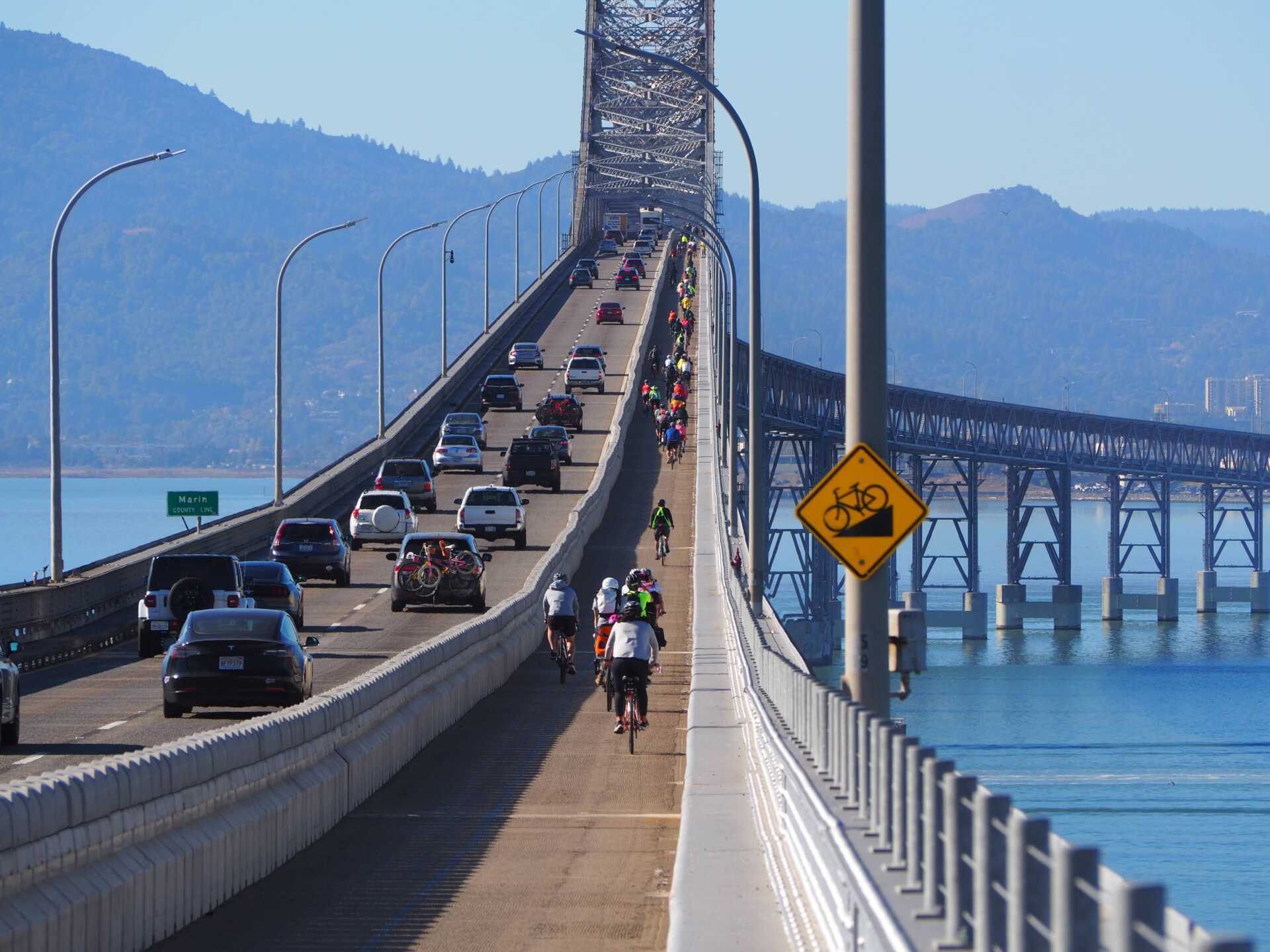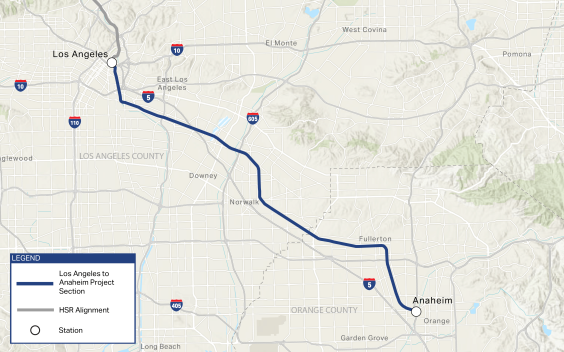Note: GJEL Accident Attorneys regularly sponsors coverage on Streetsblog San Francisco and Streetsblog California. Unless noted in the story, GJEL Accident Attorneys is not consulted for the content or editorial direction of the sponsored content.
Here are two new stories of interest to the safe and livable streets community.
Local newspaper story challenges Bay Area Council's phony baloney about the Richmond-San Rafael Bridge path
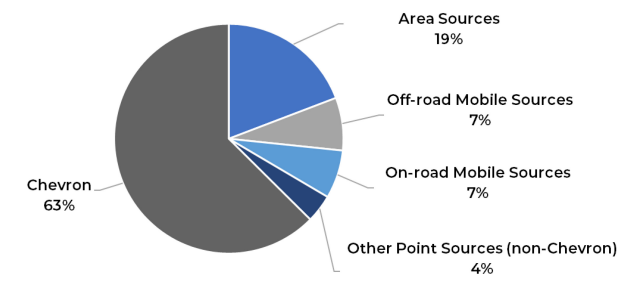
The Richmondside, an independent newspaper, is running a series on pollution in their city. It's helping advocates underscore the disinformation the Bay Area Council continues to spread about pollution and the Richmond-San Rafael Bridge bike and pedestrian path. Despite being corrected again and again, the "Get the Richmond Bridge Moving" group, a project of the Bay Area Council to turn the bike-and-pedestrian lane into an additional lane for cars, continues to claim that the path on the bridge is somehow contributing to pollution in the city. They're using that to justify turning it into an additional car lane.
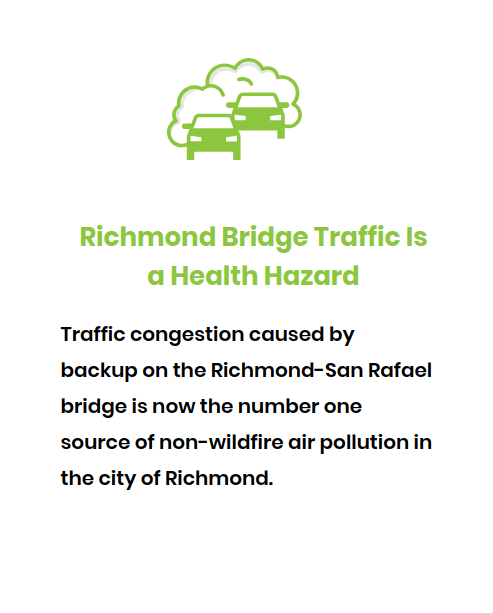
The Bay Area Council, since they don't have facts on their side, is resorting to "big lie" propaganda. Saying that a bike lane is causing pollution is absurd enough, but to claim it is causing major jams on the bridge and that traffic congestion on the bridge is the "number one source of non-wildfire air pollution in the city of Richmond" is truly a whopper (see pie chart at the head of this post). As Richmondside points out, traffic congestion is not even close to the biggest source. That distinction goes to the Chevron oil refinery.
It's not as if the Bay Area Council hasn't been challenged and corrected on this lie before (Streetsblog has done it, as have advocates). And yet they continue to propagate nonsense.
"The Bay Area Council's front group 'Common Sense Transportation Coalition' continues to blatantly lie & fear-monger to Richmond-San Rafael Bridge commuters about the impacts of the bike/walk trail on pollution, knowing full well that the Chevron refinery is the primary culprit," wrote Bike East Bay's Robert Prinz on social media.
Be sure to sign Bike East Bay's petition to preserve the bike space on the Richmond-San Rafael Bridge.
Emeryville protects cyclists' hearing with train 'quiet zones'
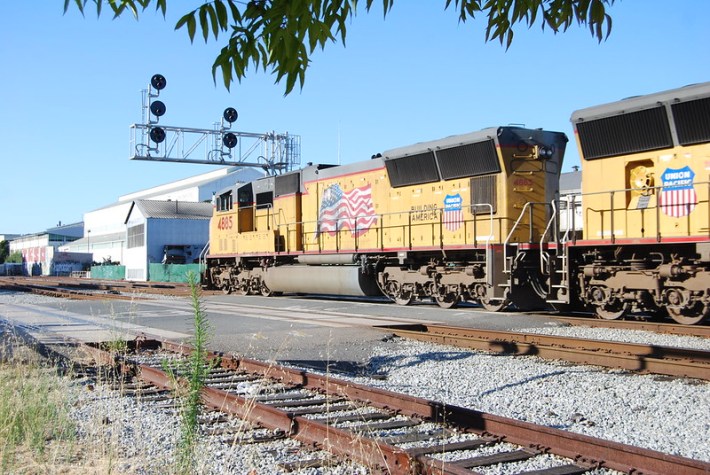
Until recently, Emeryville cyclists using the new raised, protected bike lanes on Shellmound Street have contended with loud, 100-decibel blasts from passing trains. The lanes are located just 60 feet from the tracks, with grade crossings at 65th, 66th, and 67th Streets. Fortunately, the city completed its railroad "quiet zone" as of Monday.
With protected and raised bike lanes, protected intersections, and new bike-and-ped-only routes, Emeryville is arguably the most bike-friendly little city in the Bay Area. But there's a serious downside to living in a mixed-use, bike-friendly community if the peace is disturbed regularly by blasts from train horns. That's why Emeryville councilperson and former mayor John Bauters and the city started working with the Union Pacific Railroad and the federal government six years ago to turn the area into a "quiet zone."
By default, train operators are required by the feds to sound horns at crossings, whether or not the engineer sees someone on the tracks. It's a nuisance, but, in general, a good trade-off for safety. However, there is another option—that's advanced railroad gates. "Quiet zone" areas must include signs to remind people that the train may come without blasting its horn. "Quad gates" come down on both sides of the street and include a concrete median, so impatient drivers can't go around them. And the crossings have devices to confirm to approaching locomotive engineers that they're in working order.
The Emeryville Quiet Zone starts today for railroad crossings at 65th, 66th, and 67th Streets!@JohnBauters pic.twitter.com/3hQnfUv4lj
— Emeryville, CA (@EmeryvilleCA) August 5, 2024
Bauters made a video, embedded in the above tweet, to unveil the new crossings and the establishment of the quiet zone. Bells still ring and lights still flash, but those deafening horns won't be required except in an emergency. And that's going to make cycling and just living in the area a whole lot more comfortable.
